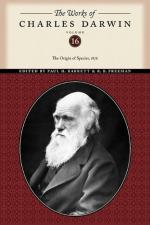Hence it seems that, on the one hand, slight changes in the conditions of life benefit all organic beings, and on the other hand, that slight crosses, that is crosses between the males and females of the same species which have varied and become slightly different, give vigour and fertility to the offspring. But we have seen that greater changes, or changes of a particular nature, often render organic beings in some degree sterile; and that greater crosses, that is crosses between males and females which have become widely or specifically different, produce hybrids which are generally sterile in some degree. I cannot persuade myself that this parallelism is an accident or an illusion. Both series of facts seem to be connected together by some common but unknown bond, which is essentially related to the principle of life.
Fertility of varieties when crossed, and of their mongrel offspring.
It may be urged, as a most forcible argument, that there must be some essential distinction between species and varieties, and that there must be some error in all the foregoing remarks, inasmuch as varieties, however much they may differ from each other in external appearance, cross with perfect facility, and yield perfectly fertile offspring. I fully admit that this is almost invariably the case. But if we look to varieties produced under nature, we are immediately involved in hopeless difficulties; for if two hitherto reputed varieties be found in any degree sterile together, they are at once ranked by most naturalists as species. For instance, the blue and red pimpernel, the primrose and cowslip, which are considered by many of our best botanists as varieties, are said by Gartner not to be quite fertile when crossed, and he consequently ranks them as undoubted species. If we thus argue in a circle, the fertility of all varieties produced under nature will assuredly have to be granted.
If we turn to varieties, produced, or supposed to have been produced, under domestication, we are still involved in doubt. For when it is stated, for instance, that the German Spitz dog unites more easily than other dogs with foxes, or that certain South American indigenous domestic dogs do not readily cross with European dogs, the explanation which will occur to everyone, and probably the true one, is that these dogs have descended from several aboriginally distinct species. Nevertheless the perfect fertility of so many domestic varieties, differing widely from each other in appearance, for instance of the pigeon or of the cabbage, is a remarkable fact; more especially when we reflect how many species there are, which, though resembling each other most closely, are utterly sterile when intercrossed. Several considerations, however, render the fertility of domestic varieties less remarkable than at first appears. It can, in the first place, be clearly shown that mere external




